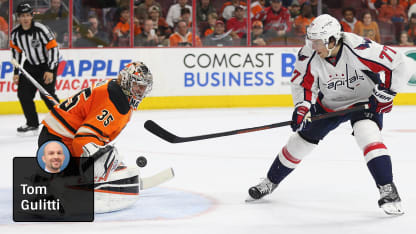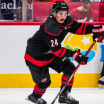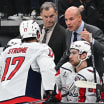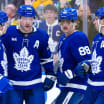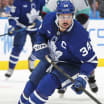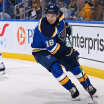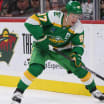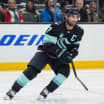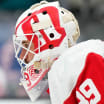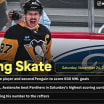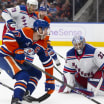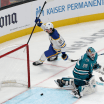Oshie also appeared to have Bobrovsky beat on his deke-forehand quick-upstairs move before shooting high over the crossbar.
"He has a lot of different moves that look the same," Holtby said. "If you do one thing, it usually opens up his other move. He knows where the sweet spot is to shoot where you can't really react and you're not really big enough to block space. A lot of guys have trouble finding that, but he has a pretty good idea of where that is."
To further confuse the goaltender, Oshie has variations within each move, such as sometimes using a fake shot or a quick stickhandle and other times leaving them out.
"His play deception is unbelievable," Grubauer said. "He makes it so hard for us goalies to read. It doesn't matter if he's coming in slow or with speed. He has really good hands."
When Oshie was with the Blues, he would practice his shootout moves almost every game day at the end of the morning skate. With the Capitals he practices them "every couple weeks."
"It's the one time it's just you and the goalie one vs. one and someone is going to win," Oshie said. "I feel like the competition side in you comes out when it's something like that."
Although practicing the shootout against Oshie has the potential to get frustrating for Holtby and Grubauer, they say it's helpful.
"It makes you more patient. It exposes your holes," Holtby said. "He can help you change. It's always different facing guys that don't have the skill level. They're almost as tough to stop as guys with a lot of skill. But he has that perfect mix where he knows how to use it and he's very good at reacting to goalies."
Every once in a while, Oshie will try out a new move in practice, but mostly sticks with his main four in games.
"In the summer I'm always messing around and trying different things, doing different moves," he said. "My moves aren't necessarily highlight-reel. I feel like they're just ways I can get the puck in the net. There's a lot of guys in the League that are probably a lot more fun to watch than I am."
